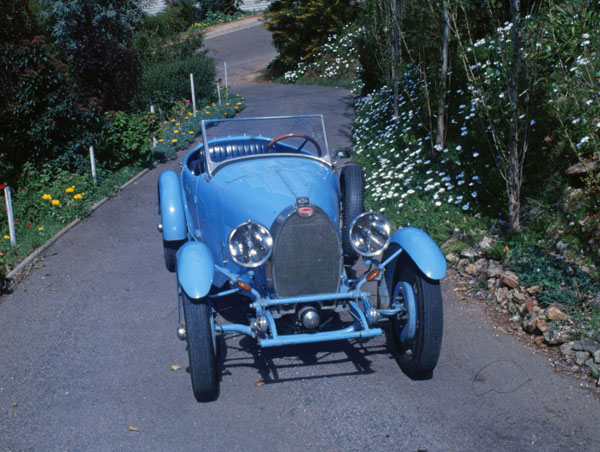

After World War I much development took place in motor vehicles and, in particular, in sportscars. Every country was determined to showcase their engineering ability and frequently the racing track was used as the place to do this. The sportscars that emerged in the early twenties began to show substantial reductions in engine size and a far greater reliance on the gearbox to provide reasonable – and in some cases very rapid – acceleration. Prior to 1914 the gearbox was seen purely as a device to get the large-engined cars moving from a stationary position or to climb steep hills.
The nearest French equivalent to the Mercedes sportscars of the time was the Bugatti T35. Launched in 1924 this had a single overhead camshaft straight eight engine and a superbly engineered chassis. Performance of this car was so good that it virtually dominated its class of sportscar racing from 1925 to as late as 1930. The 86kW roller-bearing engine was safe to 5000rpm and propelled the car to a maximum speed of about 177km/h. The Type 35 Bugatti won innumerable sporting events between 1924 and 1930.
It was fitted with engines as small as 1.1-litre up to 2.3-litre. The technical improvements brought about by World War I led to an increasing interest in what were then considered very small engines. Before the war very few cars had engines of much below three litres, but by 1922 their performance could be equalled, if not bettered, by most 1.5-litre models. British manufacturers such as Alvis, MG and Riley were later to excel in this field, but it was Bugatti who first demonstrated exactly what 1.5-litre could do. Indeed, with its 1496cc engine, multi-plate clutch and four-speed gearbox giving a maximum speed of about 137km/h, the Bugatti T23 was easily the fastest small car on the market for a time. Not surprisingly, it caused a sensation.
At least as advanced as Bugatti’s designs, and certainly even less conventional, was the Italian Lancia Lambda which was launched in 1922. This was more of a four-seater tourer than a true sportscar but had exceptional performance, way beyond the reach of most of the other tourers available at the time. Light English sportscars were crude by comparison. Most achieved their high performance from simple side-valve engines by using light bodies and high axle ratios to attain a top speed of 97km/h when most tourers were flat out to get to the 73km/h mark. Percy Riley was one of the first exponents of this theme using a bare aluminium body on his 11/40 sports model which was capable of reaching 113km/h.









